Did you know that mustard greens are not only delicious but also incredibly nutritious? These vibrant leafy greens hold a host of health benefits that can improve your overall well-being. From boosting your immune system to promoting heart health, mustard greens are a powerhouse of nutrients that deserve a place in your diet.
Not only are mustard greens packed with essential vitamins and minerals, but they are also low in calories and rich in antioxidants. These greens belong to the Brassica family, which includes other nutritious vegetables like cabbage, kale, and broccoli. With their slightly peppery flavor and vibrant green color, mustard greens are a versatile ingredient that can be prepared and cooked in various ways.
In this article, I will delve into the nutritional value of mustard greens, provide tips on selecting and storing them properly, explain different cooking techniques, and highlight their incredible health benefits. Whether you are a seasoned cook or just starting your journey in the kitchen, this article will uncover the secrets of mustard greens and inspire you to incorporate them into your meals.
Key Takeaways:
- Mustard greens are a versatile and nutritious leafy green that offer a range of health benefits.
- They are packed with essential vitamins, minerals, antioxidants, and fiber.
- Proper storage involves keeping mustard greens in a plastic bag in the refrigerator.
- Mustard greens can be prepared and cooked in various ways, including blanching, sautéing, steaming, and stir-frying.
- Their health benefits include boosting the immune system, promoting heart health, and potentially preventing cancer.
Understanding Mustard Greens
Mustard greens are leafy vegetables that belong to the Brassica family, which also includes cabbage, kale, and broccoli. These greens are characterized by their vibrant green color and slightly peppery flavor. They are packed with essential nutrients like vitamins A, C, and K, folate, and fiber. Mustard greens come in different varieties, including curly, flat-leaf, red, and Japanese (Mizuna) mustard greens. Each variety offers a unique taste and texture, allowing for versatility in cooking.
To bring out the natural flavors and nutrients in mustard greens, it’s important to understand their characteristics and how they can enhance your dishes. The vibrant green color not only adds visual appeal to your plate but also indicates the abundance of nutrients present in the greens. The slightly peppery flavor adds a delightful zing to your recipes, making them a favorite among those who enjoy a touch of spiciness.
Being part of the Brassica family, mustard greens share a similar nutritional profile with their relatives. They are rich in vitamins A, C, and K, all of which are essential for supporting various bodily functions. Vitamin A promotes good vision and skin health, while vitamin C boosts the immune system and fights off harmful free radicals. Vitamin K plays a crucial role in blood clotting and maintaining healthy bones. In addition, mustard greens are a great source of folate, a B vitamin that supports cell function and helps prevent certain birth defects.
Incorporating mustard greens into your diet gives you a fantastic opportunity to tap into their nutrient density. Whether you’re adding them raw to salads, sautéing them as a side dish, or incorporating them into soups or stews, mustard greens offer a vibrant burst of flavor and a generous dose of essential nutrients.
Benefits at a Glance:
- Vibrant green color adds visual appeal
- Peppery flavor adds a delightful zing
- Rich in vitamins A, C, and K
- Great source of folate
- Offers versatility in cooking
Nutritional Content of Mustard Greens
| Nutrient | Amount per 100g |
|---|---|
| Calories | 27 |
| Carbohydrates | 4.7g |
| Protein | 2.2g |
| Fat | 0.4g |
| Vitamin A | 5884IU |
| Vitamin C | 70mg |
| Vitamin K | 257.5mcg |
| Folate | 97mcg |
| Fiber | 3.7g |
Nutritional Profile of Mustard Greens
Mustard greens are a powerhouse of nutrients, offering a multitude of health benefits. These leafy greens are not only low in calories but also packed with essential vitamins, minerals, antioxidants, and fiber. Incorporating mustard greens into your diet can be a delicious way to maintain a healthy lifestyle.
Vitamins
Mustard greens are an excellent source of vitamins A, C, and K. Vitamin A supports healthy vision, immune function, and skin health. Vitamin C is essential for immune system support, collagen production, and antioxidant activity. Vitamin K plays a crucial role in blood clotting and bone health.
Minerals
In addition to vitamins, mustard greens are rich in minerals. They are particularly high in folate, a B vitamin that plays a vital role in cell growth and development. Mustard greens also contain calcium, iron, and potassium, which are essential for bone health, oxygen transport, and proper muscle function.
Antioxidants
Mustard greens are packed with antioxidants, including beta-carotene and lutein. These compounds help protect cells from damage caused by harmful free radicals. Antioxidants play a key role in reducing the risk of chronic diseases, such as heart disease and certain types of cancer.
Fiber
Fiber is an essential component of a healthy diet, and mustard greens are a great source. Fiber aids digestion, helps maintain a healthy weight, and supports heart health. Consuming an adequate amount of fiber can also promote feelings of fullness, aiding in weight management.
To summarize, mustard greens are a nutritional powerhouse, providing vitamins, minerals, antioxidants, and fiber. Incorporating these nutritious greens into your meals can help support overall health and well-being.
Selecting and Storing Mustard Greens
When it comes to selecting mustard greens, freshness is key. Look for vibrant and crisp leaves that are free from wilting or yellowing. Opt for mustard greens with firm stems and no signs of sliminess or discoloration. Smaller leaves tend to be more tender and milder in flavor, while larger leaves can be slightly tougher and have a stronger, spicier taste.
Proper storage techniques are important to maintain the quality of your mustard greens. To keep them fresh, start by wrapping the greens loosely in a damp paper towel. This helps retain their moisture and prevents drying out. Then, place them in a plastic bag or an airtight container in the refrigerator.
Using this method, mustard greens can be stored for a few days without compromising their flavor and texture. However, it is recommended to use them as soon as possible for the best taste and nutritional value.
Preparing Mustard Greens for Cooking
Before you start cooking with mustard greens, it’s important to properly prepare them to ensure the best texture and flavor in your dishes. Here are some essential steps to follow:
- Cleaning Mustard Greens: Begin by gently washing the mustard greens under cold running water. This will help remove any dirt or debris that may be clinging to the leaves.
- Removing Tough Stems and Ribs: To ensure a pleasant texture in your dishes, it’s crucial to remove the tough stems and ribs from the mustard greens. You can do this by either slicing along the side of the stem to separate the leaf or by cutting out the thick rib in the center of the leaf. Removing these parts will make your mustard greens easier to chew and enjoy.
- Chopping and Slicing Techniques: Once the stems and ribs are removed, you can proceed with chopping or slicing the mustard greens based on your desired texture and presentation. If you prefer a finer texture, you can chop the leaves into thin strips. For a more elegant presentation, slicing the mustard greens into ribbons can be a great option.
By following these simple steps, you’ll be able to prepare your mustard greens properly, ensuring a delightful cooking and eating experience. Now that you’ve prepped your mustard greens, it’s time to learn some exciting cooking techniques to make the most out of this nutritious ingredient.
Blanching Mustard Greens
Blanching is a cooking technique that can elevate your mustard greens to a whole new level of tenderness and flavor. By briefly boiling the greens and then immediately plunging them into ice water, you can preserve their vibrant green color and lock in their valuable nutrients. This blanching process is especially beneficial if you prefer milder flavors and prefer your greens to have a softer texture.
To blanch mustard greens, follow these simple steps:
- Bring a pot of water to a rolling boil. It should be large enough to fit all of your mustard greens.
- While the water is boiling, prepare an ice bath by filling a large bowl with cold water and ice cubes.
- Immerse the mustard greens into the boiling water and allow them to cook for about 2 minutes.
- Using a slotted spoon or tongs, quickly transfer the greens from the boiling water to the ice bath.
- Let the greens sit in the ice bath for about 2 minutes to cool them down completely.
- Remove the greens from the ice bath and gently pat them dry with a clean kitchen towel or paper towels.
Blanching not only tenderizes the mustard greens but also helps preserve their beautiful color and important nutrients. Now you can incorporate your blanched mustard greens into various dishes, such as sautés, stir-fries, soups, salads, or any other creations that call for the vibrant taste of mustard greens.
Blanching mustard greens is a simple yet effective cooking technique that can bring out the best in these nutritious greens. By preserving their color and nutrients, blanched mustard greens not only provide a visual appeal but also ensure that you enjoy all the health benefits they have to offer.
Health Benefits of Mustard Greens
Mustard greens are not only delicious but also offer numerous health benefits. Let’s explore how these vibrant greens can contribute to your overall well-being.
Cancer Prevention
Mustard greens are rich in antioxidants, which play a crucial role in neutralizing harmful free radicals in the body. Free radicals can cause oxidative stress and damage to cells, increasing the risk of cancer. By consuming foods high in antioxidants like mustard greens, you can reduce the risk of developing certain types of cancer.
Heart Health
Mustard greens contain vitamin K, which is essential for maintaining cardiovascular health. Vitamin K helps regulate blood clotting and prevents the buildup of calcium in the arteries, reducing the risk of heart disease and stroke. Including mustard greens in your diet can support a healthy heart.
Immune System Support
Vitamin C is known for its immune-boosting properties. Mustard greens are a good source of vitamin C, which helps strengthen the immune system and promotes the production of white blood cells that defend against infections and diseases.
Bone Health
Vitamin K, found abundantly in mustard greens, is vital for maintaining strong bones. It aids in the absorption of calcium and supports bone formation and mineralization. Regularly consuming mustard greens can help prevent osteoporosis and improve bone density.
Antioxidant Powerhouse
Mustard greens are packed with various antioxidants, including beta-carotene and lutein. These antioxidants help protect cells from damage caused by free radicals and reduce the risk of chronic diseases, such as heart disease and diabetes.
| Health Benefit | How Mustard Greens Help |
|---|---|
| Cancer Prevention | High in antioxidants, which neutralize free radicals and reduce cancer risk. |
| Heart Health | Rich in vitamin K, which supports cardiovascular health and prevents heart disease. |
| Immune System Support | Provides a significant amount of vitamin C, boosting immune function and fighting infections. |
| Bone Health | Contains vitamin K, essential for strong bones and preventing osteoporosis. |
| Antioxidant Powerhouse | Packed with antioxidants that defend against cellular damage and reduce the risk of chronic diseases. |
Incorporating mustard greens into your diet is an excellent way to reap these health benefits. Whether enjoyed raw in salads, sautéed in stir-fries, or added to soups and stews, make sure to include this nutritious leafy green in your meals.
By prioritizing your health and nourishing your body with nutrient-dense foods like mustard greens, you can support your overall well-being and enhance your culinary experiences.
Different Ways to Enjoy Mustard Greens
Mustard greens offer a variety of flavors and textures that can be enjoyed in different ways. Whether you prefer the raw, cooked, or pickled version, there are numerous recipes and techniques to explore. Let’s take a look at the various ways you can savor the unique taste of mustard greens.
Raw Mustard Greens
If you’re a fan of bold flavors, raw mustard greens will be right up your alley. These greens add a spicy, peppery kick to salads and can be blended into energizing smoothies and green juices. Their crunch and vibrant taste make raw mustard greens a refreshing addition to your culinary repertoire.
Cooked Mustard Greens
Cooked mustard greens offer a milder flavor and a tender texture that pairs well with a wide range of dishes. Sautéing, steaming, or incorporating them into soups, stews, and side dishes are popular ways to cook these greens. To enhance the taste, you can experiment with ingredients like garlic, olive oil, vinegar, and a squeeze of lemon juice.
Pickled Mustard Greens
For a tangy and savory twist, try pickled mustard greens, also known as takana. These greens are pickled using vinegar, salt, sugar, garlic, and chiles, resulting in a delightful combination of flavors. Pickled mustard greens add a zesty kick to Asian-inspired dishes, such as stir-fries and noodle soups.
Now that you know the different ways to enjoy mustard greens, it’s time to get creative in the kitchen. Explore a variety of recipes that showcase the versatility of this leafy green vegetable.
| Raw Mustard Greens | Cooked Mustard Greens | Pickled Mustard Greens |
|---|---|---|
| Spicy Mustard Greens Salad | Sautéed Mustard Greens with Garlic | Quick Pickled Mustard Greens |
| Mustard Greens Smoothie | Steamed Mustard Greens with Lemon | Mustard Greens Kimchi |
| Mustard Greens Wraps | Mustard Greens and Lentil Soup | Mustard Greens Pickled Eggs |
Where to Find and How to Store Mustard Greens
When it comes to buying mustard greens, you can find them at local grocery stores, farmers markets, and Asian markets. These versatile leafy greens are a popular ingredient in various cuisines and can bring a unique flavor to your dishes.
When selecting mustard greens, opt for fresh leaves that are vibrantly green and free from any signs of wilting or yellowing. The freshness of the greens is crucial to ensuring their flavor and nutritional value.
To maintain the freshness and crispness of mustard greens, it’s important to store them properly. Here are some storage tips:
- Start by gently washing the mustard greens to remove any dirt or debris. Pat them dry with a clean towel or use a salad spinner to remove excess moisture.
- Place the mustard greens in the crisper drawer of your refrigerator, either in a plastic bag or a lidded container.
- For added freshness, line the container or bag with a paper towel to absorb any excess moisture that may accumulate.
- Make sure to seal the bag or container tightly to prevent air from entering, which can cause the greens to wilt.
- Store smaller loose leaves for up to 5 days and larger bunches for up to 1 week. However, it’s best to use them as soon as possible for the ultimate crispness and flavor.
Remember, proper storage is key to maintaining the freshness and crispness of mustard greens, so you can enjoy them at their best in your favorite recipes.
Conclusion
Mustard greens are a versatile and nutritious leafy green that can elevate any meal. Whether you’re looking for a burst of flavor or a healthy dose of nutrients, mustard greens have got you covered. Packed with essential vitamins, minerals, and antioxidants, they offer a range of health benefits that support overall well-being.
From raw salads to cooked dishes and even pickled creations, mustard greens bring a unique taste and vibrant color to your culinary repertoire. Add them to your favorite recipes or experiment with different cooking techniques to unlock their full potential. The possibilities are endless!
So, the next time you’re in need of cooking inspiration, look no further than mustard greens. This versatile ingredient not only adds a punch to your plate but also provides you with the vital nutrients your body craves. Explore the world of mustard greens and discover a new level of flavor and nutrition in your meals.

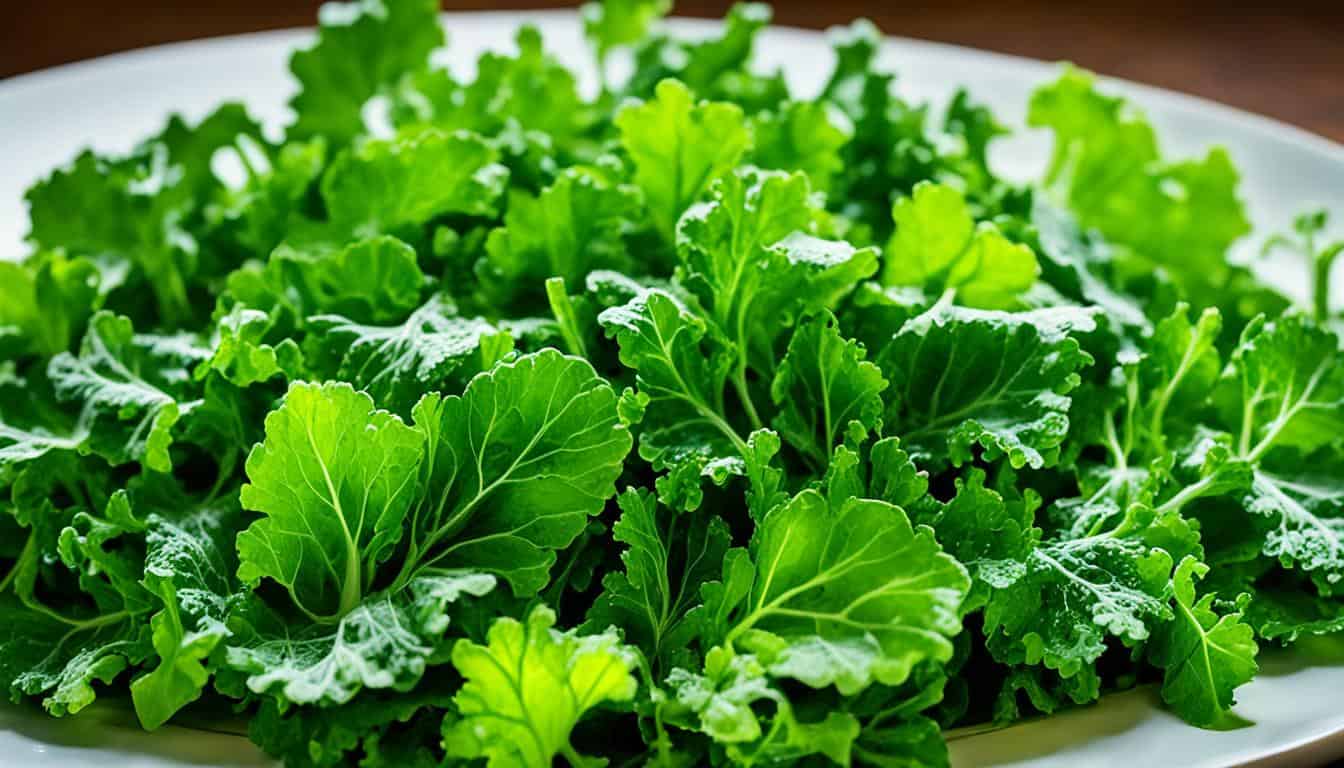
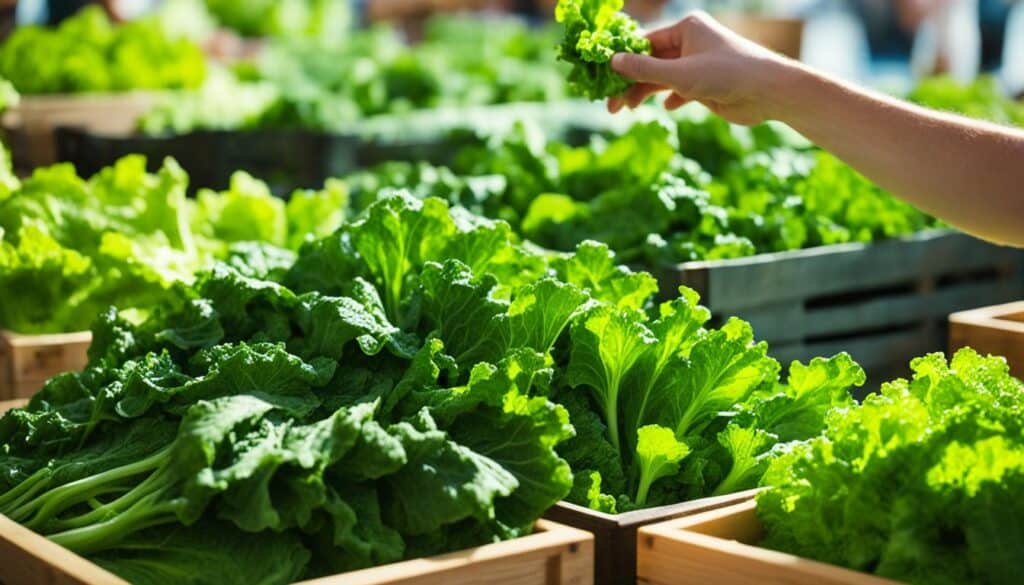
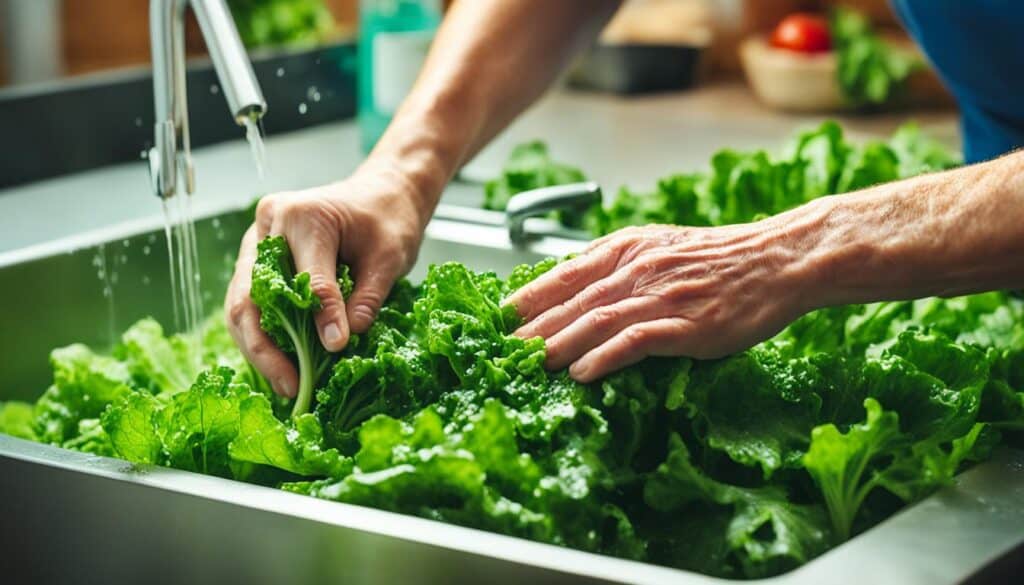
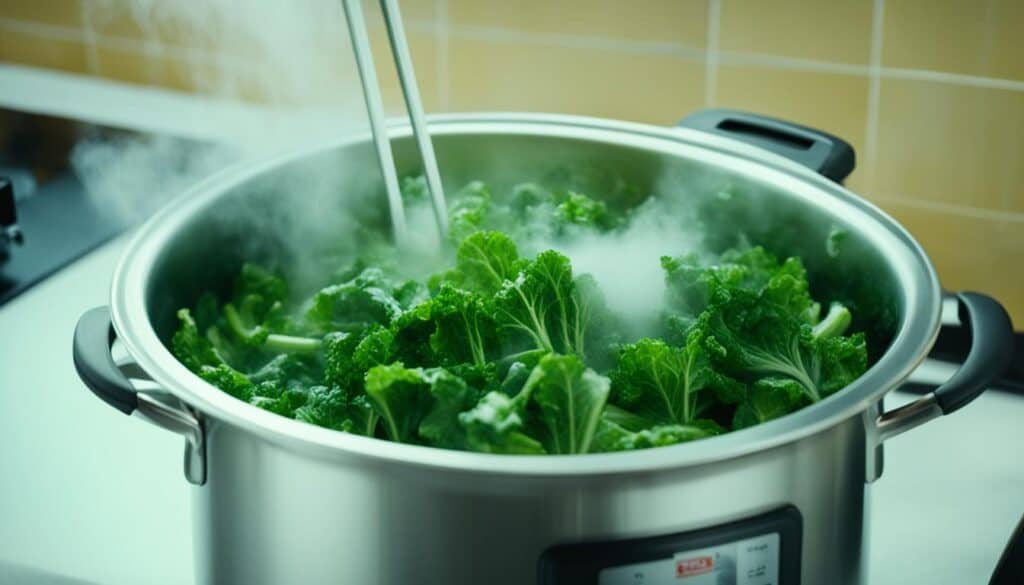
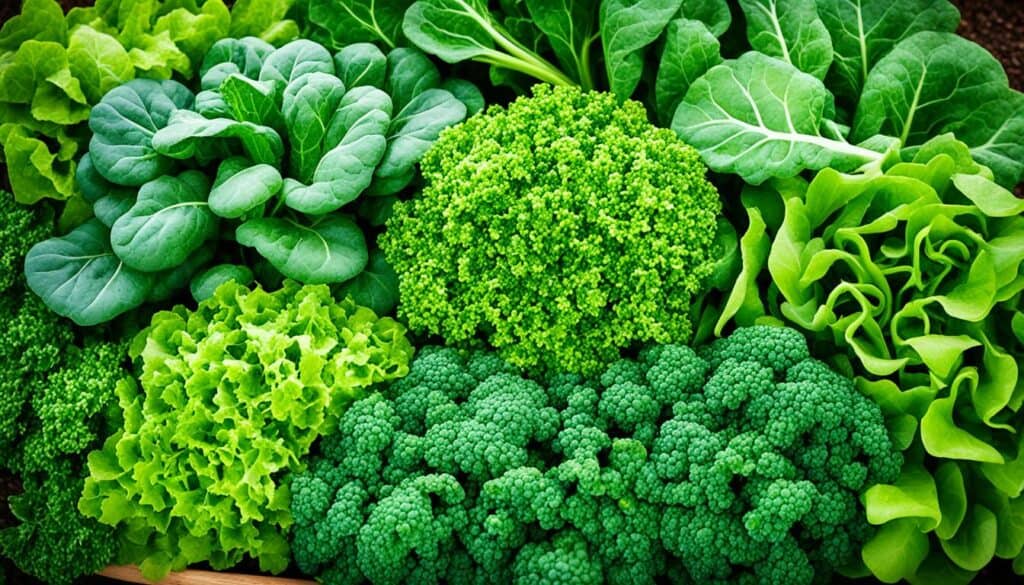
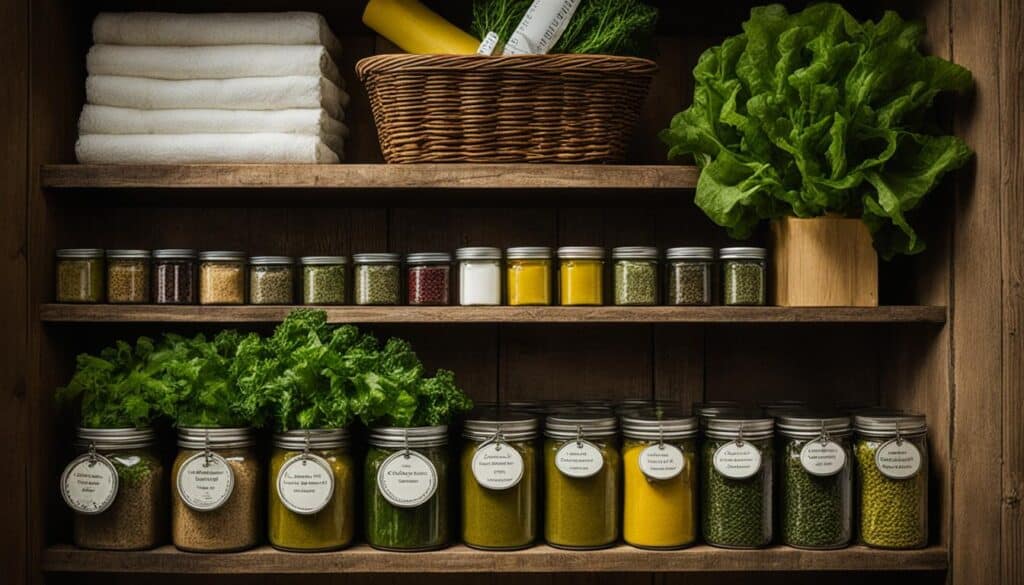



Leave a Reply